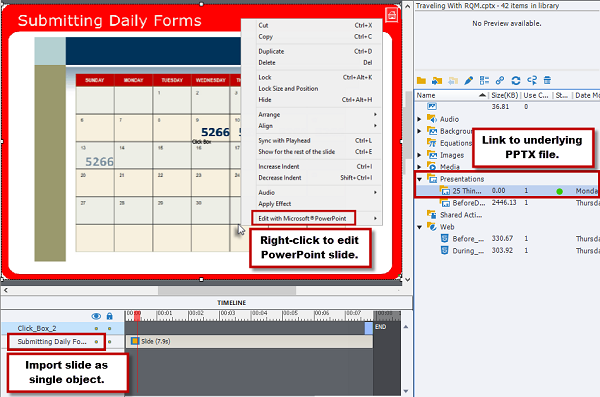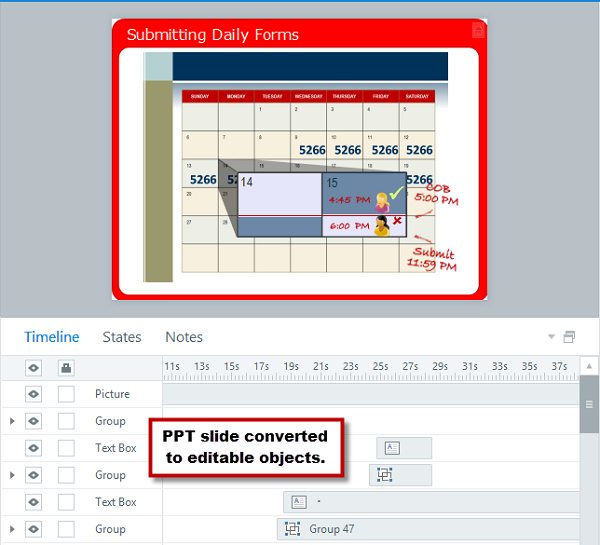ATD Blog
Toolbox Tip: Importing PowerPoint—Storyline vs. Captivate
Tue Nov 18 2014

If you are converting instructor-led training into e-learning, you may want a quick way to convert your classroom PowerPoint slides into e-learning course slides. Or perhaps you want subject-matter experts to help create content, but they only know how to use PowerPoint. In both cases, being able to import PowerPoint slides directly into your e-learning authoring tool can be a big time saver.
Before I get into how the various tools tackle this task, let me answer the question that’s probably on some people’s minds right now. Isn’t that just a fast-track to really boring, text-and-next e-learning? The answer is yes and no. PowerPoint importing can make it quicker and easier than ever to create bad e-learning.
Your slides not be very good to being with.
Even if they work in the classroom, that doesn’t mean they are right for self-paced e-learning.
But I don’t want to throw out the baby with the bath water. You can make fantastic, instructionally relevant slides in PowerPoint. You can make mind-numbing bullet point nightmares in PowerPoint. The design is up to you. So from this point on, we’ll assume that your PowerPoint slides are worth importing!
Adobe Captivate
When you import a PowerPoint slide in Adobe Captivate, it appears in your course pretty much as-is. Captivate does a really good job of keeping the fidelity of your original slide, including complex animations.
Once in Captivate, it stays as a PowerPoint slide. That means you can’t break it apart in Captivate and make changes, such as getting rid of one of the text boxes or adjusting the timing of the animations. If you do need to make a change, a quick right-click lets you edit the slide back in PowerPoint without fully leaving Captivate.
And if you like, you can link the slide to the PowerPoint file it came from. That way, if you change the underlying PowerPoint file, you can update it in your Captivate file the next time you open it.

Articulate Storyline
When you import a PowerPoint slide in Storyline, it breaks down into individual elements on the slide. This can be a good thing or a bad thing—based on what you are trying to accomplish.
The good thing is that you now have access to all the pieces of the slide and can make whatever adjustments you want. You can change text, formatting, timing, and so forth. You can take a presentation-only slide from PowerPoint and add interactive elements to it in Storyline.
The potential downside is that you can sometimes lose something in the conversion. If your PowerPoint slide has animations or text formatting that Storyline doesn’t have, then those features will get stripped in Storyline. Fortunately, Storyline 2 has more animations and formatting options, so fewer things get stripped out.

So which one is right for you? It depends upon what you want to accomplish. Choose Captivate for a higher fidelity or for source file linking. Choose Storyline for flexibility after import.
